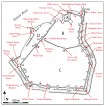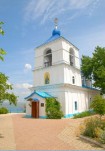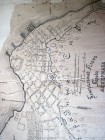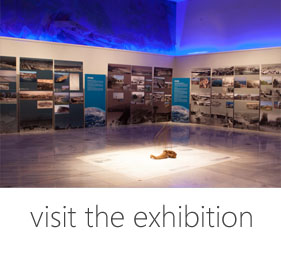Name
Bilhorod-DnistrovskyiCurrent Name
Bilhorod-Dnistrovskyi (commonly also spelled as Belgorod-Dnestrovsky)Ancient Name
TyrasMedieval Name
Belgorod, Asprocastron, Mauricastro, Cetatea Albă, AkkermanHistory of the name
Tyras was the ancient Greek name for the river Dniester. Early Slavic Belgorod, Byzantine Asprocastron, Genoese Mauricastro, Romanian Cetatea Albă, Turkish Akkerman and Ukrainian Bilhorod all refer to either “white town”, “white castle” or “white fortress” apparently due to the color of local limestone blocks of which the fortifications were built. The addition of “Dnistrovskyi” to the current name of the city refers to its location on the bank of the Dniester River (“on the Dniester”).
Place :
Country
UkraineGeopolitical Unit
Odessa oblast (region)Administrative subdivision
Bilhorod-Dnistrovskyi raion (district)Location
On the right (western) bank of the Dniester Estuary, about 50 km southwest of Odessa, 20 km from the coast of the Black Sea (46°11 32'' N 30°20 00'' E).Foudation Date
Late 6th century BCCurrent condition
The city of Bilhorod-Dnistrovskyi with a population of 57.102 residents (as per September 1st, 2012) serves as an administrative center of the Bilhorod-Dnistrovsky Raion. It is a rail junction and a big freight seaport. Major industries include fishing and fish processing, meat and dairy processing, manufacture of medical equipment and concrete construction materials, food production and winemaking. The latter combined with rich historic heritage have made the city a well-known center of domestic and international tourism.History
The settlement of Tyras was founded here in the 6th c BC by ancient Greek colonists from Milethus. For centuries it served as a large Greek polis and trading post on the northwest coast of the Black Sea. In the 2nd c AD Tyras was a Roman frontier post, and it survived until the 4th c when it was destroyed by the Huns. Thereafter the town was in hands of the Byzantines who built here the fortress and named it Asprocastron. In 1261 the city came under the control of the Republic of Genoa. Known at that time as Mauricastro the city became a base for trading by Genoese merchants with both the Byzantine Empire and the Mongol Empire. It is known that during the Tatar incursion in 1330 there was martyred St. John the New, the Patron Saint of Moldavia.
Following a rather brief control by the Republic of Genoa, by the end of the 14th c. the city became a part of the newly-established Principality of Moldavia. For the next century the city, sometimes also referred to as Cetatea Albă, was second major city in the principality, its major port and an important fortress. In 1420 the citadel was attacked for the first time by the Ottomans but successfully defended by Moldavians. However, already in 1484 the Ottomans managed to conquer the fortress and the city. Under the Ottomans the city and the fortress were known as Akkerman. The fortress of Akkerman was a part of the Ottoman defensive system against Polish-Lithuanian Commonwealth and, later, the Russian Empire. The city remained under Ottoman rule for a period of more than three hundred years, until the Russian Empire annexed it.
During Russian-Turkish wars Russian troops several times conquered the fortress (1770, 1774,1806) but the city was incorporated into Russia only in 1812. In 1918 after the local parliament has voted for the unification with Romania the city under the name of Cetatea Albă, along with the rest of Bessarabia, became part of Romania. By the end of the World War II in 1944 the city was retaken by the Soviet Red Army and given back its original Slavic name Belgorod. Since then it became part of the Ukrainian Soviet Socialist Republic of the USSR, and later, in 1991, of modern Ukraine.
Description
Pre-medieval history of the city is represented mainly by remains of round and pentagonal towers, defensive walls and other structures from the Classical period and a building of headquarters of the Roman garrison (vexillatio) found at the excavations of Tyras. Other historic monuments from this period include two stone crypts known as Scythian Tomb (2nd-3rd cc) and Sarmatian Tomb (3rd c).
The major witness of the medieval history of the city is the Akkerman fortress. Apart from proper towers, defensive walls and other fortifications, not many historic structures from the medieval period have survived or been excavated in the fortress and the adjacent territory of the city. These include (1) remains of an apse of an early Christian basilica dated arguably to the 7th c., found in the excavation area of ancient Tyras, (2) remains of Turkish baths (hamam) excavated just outside the northern wall of the fortress, in the area known as Port Yard, (3) remains of what appears to be a mosque excavated inside the fortress by the northern wall, in the area of Civil Yard, and (4) a well-preserved minaret of a mosque in Civil Yard, near the wall separating it from Garrison Yard.
Some other structures, though initially built as early as in 13th-15th cc, throughout their history have undergone much rebuilding and numerous modifications because of which their medieval origin is hardly recognizable today. These are (1) Greek Church of John the Baptist built in the 13th c, (2) Underground Church of John the New of Suceava built in the 14th c and (3)
Armenian church of Our Lady of the Assumption built in the 14th-15th cc.
Harbor
The Bilhorod-Dnistrovskyi Commercial Sea Port, as it is seen today, was built in 1971. The port is situated in a harbor on the western bank of the Dniester Estuary, about 14 km from the Black Sea coast, and nowadays it occupies an area of some 50 ha. In the port there are 9 piers with a total frontal length of 1160 m. Water depth by the piers is 3.5-4.5 m. The port can take ships up to 135 m long. The bridge at the entrance to the estuary allows clearance of no more than 28 m for incoming ships. The port is open for navigation all year round. It is mainly a freight seaport specializing in handing of foreign trade cargos (exported/imported goods) and national coastal trade goods such as grains, timbers, cattle, inorganic and construction materials. Overall basic productive capacity of the port is 1,200,000 tons a year. Total area of storage facilities is 95,695 sq. m.
In the past, the city also served as an important port. The appearance of its port during the Classical and Roman periods unfortunately remain unknown because the so-called “Lower Town” with its waterfront structures is now submerged in the estuary. However, from archaeological research it is known that starting from the 5th c BC Tyras maintained trade relations with autochthonous population of the Lower Dniester and Lower Danube regions as well as with Histria, Olbia and cities of the Bosporan Kingdom.
Not much is known about the city during the Early Medieval period. Only in the 14th c there is a clear evidence of establishing here the Genoese trading station of Mauricastro which traded with other Genoese trading posts on the Danube and the Black Sea coast and Byzantium. By 1480s the city grew into a large sea port of the Moldavian Principality situated on a transcontinental trading route connecting inland European centers of Krakow and Lvov via the Black Sea with Caffa and Constantinople.
Following the capture of the fortress by Ottomans in the late 15th - early 16th cc the “Moldavian” trading route dwindled. It was during the Ottoman period that the preserved until today the Port Yard of the Akkerman fortress with barbican, the fortified gateway to the fortress from the estuary, were built. Recent excavations in this area also revealed the remains of hamam, which are believed to be the earliest Turkish baths found so far in Ukraine.
Fortification
The first fortifications were built in ancient Tyras in the 4th c BC. Of these only a part of defensive walls and two towers have been excavated and conserved to date. The Citadel of the medieval fortress was built apparently by Genoese in the 13th c. Other towers and defensive walls of the fortress were erected and rebuilt during the Moldavian and the Ottoman periods (from the late 14th through 17th cc). The fortress lost its importance as a military post in 1820s. Since 1850s it has been a subject of historic and archaeological research. The fortress covered the area of about 9 ha and had 4 courtyards, 34 towers and up to 5-m thick defensive walls some 2,5 km in length. The fortress was surrounded by a 20-m deep ditch or moat. The area of the fortress is composed of 4 yards: Citadel Yard, Garrison Yard, Civil Yard and Port Yard. First extensive archaeological and restoration works took place in the fortress in 1930s when the city was a part of Romania. Following the end of the World War II, since 1950s ar
Medieval Sites
MONUMENTS-SITES
• Sarmatian Tomb, 3rd c (1 Kutuzova Street)
The monument found in 1989 represents a stone crypt looted still in antiquity. In association with the crypt there were found fragmentary amphorae and red-glazed pottery dated to the 3rd c AD. The crypt is made of well-worked plates of local limestone and consists of a burial chamber and a dromos (tunnel leading into it). In front of the entrance to the chamber there was a small stone altar. Nowadays the crypt is placed by the Armenian Church of Our Lady of the Assumption, and the altar can be seen in the exposition of the Municipal Museum of History.
• Scythian Tomb, 2nd-3rd cc (81 Shabska Street)
The tomb found in 1895 is a stone crypt which was plundered in ancient times. It is composed of two chambers made up of large, up to 3 m long limestone plates. The tomb was cut out in the bedrock and an earthen mound (kurgan) was raised over it. The inside wall paintings have unfortunately not survived. Today it can be seen in the place where it had been found, in the area by the sea port.
• Excavations of Tyras, 6th c BC – 4th c AD, & Akkerman Fortress, 13th-18th cc (1 Ushakova Street)
The site represents a unique for Ukraine archaeological and historic complex featuring evidence of human occupation and architectural developments spanning a time period of some 2,500 years.
Excavations of Tyras just outside Akkerman have unearthed remains of ancient defensive walls, towers, residential and public buildings. Unfortunately, most of this ancient Greek settlement is either buried under the medieval fortress or submerged under the waters of the estuary and is awaiting future archaeological research.
In plan view the fortress built of the local limestone has irregular polygonal shape of some 9 ha in area. On three sides the fortress is surrounded by a ditch (or moat) up to 20 m in depth and 13 m in width. The outer defensive walls are 12 m high and up to 5 m thick. Total length of defensive walls along the perimeter of the fortress reaches almost 2500 m. The fortress also contained 34 defensive towers of various shapes (rectangular, round and polyhedral).
• Greek Church of John the Baptist, 13th – 18th cc (13 Leona Popova Street)
The church is located in a scenic environment, on a high plateau overlooking the Dniester Estuary. Plan of the church suggests that it was built in the late 13th – early 14th c. This suggestion is supported by some indirect evidence such as that for establishing the Orthodox eparchy in the city in 1347. In the 15th c it served as a residence of the Byzantine exarch in the Moldavian Principality. In the 16th c the church was rebuilt after destruction and somewhat extended westwards. In the first half of the 19th c the church witnessed erection of the bell tower and another major reconstruction. By the church there is the Chapel of John the New of of Suceava built arguably in the 15th c. Beneath the church, closer to the shore of the estuary, there existed an old Orthodox cemetery destroyed in the 1970s.
• Armenian Church of Our Lady of the Assumption, 14th – 19th cc (1 Kutuzova Street)
The church was built by Armenians during the Ottoman period, apparently in the 14th-15th cc. In 1699 the alter part was added to the church. In 1827 the the building was extended westwards and a four-pillar west portico was built. Today the church represents a low, cross-shaped building. The walls inside the church have retained old paintings and the imbedded medieval carved marble plates or tombstones (khachkars), the earliest of which may date to as early as the 10th c. In the area by the church there used to use be an old cemetery which has not survived into the present.
• Underground Church of John the New of Suceava, 14th – 17th cc
(116 Shabska Street)
The church is built over a stone well where, as the legend tells, St. John the New, the Patron Saint of Moldavia, was martyred by Tatars in 1330. His body was placed into a small chapel by the Church of John the Baptist where it remained for about 70 years. Later Moldavians moved his relics to the town of Suceava in the present-day Romania. In 1884 a small part of his relics was returned to Akkerman. For centuries people have believed in healing properties of water from the well and today the church and the well also remain a place of pilgrimage.
MUSEUMS
• Bilhorod-Dnistrovskyi Municipal Museum of History (19 Pushkina Street).
The museum is located in a historic building erected in the last quarter of the 19th c in the Empire style. The exposition tells about history of the city and the region from antiquity till the recent past. The exhibited collection of archaeological and historic artifacts from Tyras-Akkerman include ancient tools and coins, engravings on stones and other lapidary items, masterpieces of ancient art, guns, written documents, personal belongings and other ethnographic materials.
• Finds from Tyras-Akkerman can also be seen in the expositions of Odessa Museum of Archaeology (Odessa, 4 Lanzheronivska Street) and of Odessa Numismatics Museum (Odessa, 33 Hretska Street).
Textual Sources
Until today, no original historic texts describing medieval Belgorod-Akkerman have been found in Ukrainian archives. It is highly probable that such documents have been deposited mainly in archives in Moldova, Romania and Turkey.
Scanty information is available from notes of travelers of that period. The earliest description of the medieval city was provided by Flemish traveler and diplomat Gilbert de Lannoy (1421). In the late 16th c some descriptions of the city and the fortress were made by Ottoman historian Tursun Beg and French traveler Francois de Pavie baron de Fourquevaux. Valuable information about the city can also be found in notes written by the Franciscan monk Niccolo Barsi da Lucca in 1630s. The most plentiful details about Akkerman were provided in 1657 by famous Ottoman traveler and writer Evliya Çelebi. In the 18th c the city and the fortress were also mentioned by Austrian merchant Nicolas-Ernest Kleemann (1768) and French diplomat Charles de Peyssonnel (1787).
Bibliography
• Antichnaia Tira I Srednevekovyi Belgorod [Ancient Tyras and Medieval Belgorod] (in Russian). Kiev, 1979.
• Finkel C., Bilyayeva S., Haddlesey R., Mathieu J., Ostapchuk V. Historical-archaeological investigations in Akkerman fortress, Ukraine. In: Anatolian Archaeology, 2007, No. 13, pp. 11-14.
• Furmanskaia A.I. Antichnyi gorod Tira [The ancient town of Tyras] (in Russian). In: Antichnyi Gorod. Moscow, 1963. – pp. 40-50.
• Karyshkovsky P.O., Kleiman I.B. Drevniy gorod Tira [The ancient town of Tyras] (in Russian). Kiev, 1985.
• Kravchenko A.A. Srednevekovyi Belgorod na Dnestre (konets XIII-XIV v.) [Medieval Belgorod-on-Dniester (late 13th-14th c)] (in Russian). Kiev, 1986.
• Samoylov F.A. Krepost eta takova, chto k nei ni s kakoi storony ne podstupitsia… [This fortress is unassailable from any side…] (in Russian). Odessa, 2002.
• Samoylova T.L. Tira v VI-I vv. do n.e. [Tyras in the 6th-1st cc BC] (in Russian). Kiev, 1988.
• Samoylova T.L. Tyras. In: Ancient Greek Sites on the Northwest Coast of the Black Sea. Kiev, 2001. – pp. 71-114.
• Şlapac M. Cetatea Albă. Studiu de arhitectură militară medievală [ Cetatea Albă: a study of medieval defensive architecture] (in Romanian). Chişinău, 1998.
• Shlapac M. Belgorod-Dnestrovs'kaia krepost': Issledovanie srednevekovogo oboronnogo zodchestva [The Bilhorod-Dnistrovsky fortress: a study of medieval defensive architecture] (in Russian). Chişinău, 2001.
• Son N.A. Tira rimskogo vremeni [Tyras in Roman Times] (in Russian). Kiev, 1993.
• Tira – Belgorod – Akkerman [Tyras – Belgorod – Akkerman] (in Russian). Odessa, 2010.
• Tyras/Cetatea Albă/Belhorod-Dnistrovs’kyj. Bucuresti, 2002.
• Zograf A.N. Monety Tiry [Coins of Tyras] (in Russian). Moscow, 1957.
Links
http://www.bilgorod-d.org.ua (Web-site of the city of Bilhorod-Dnistrovskyi)
http://www.belgorod.com.ua (Business portal of Bilhorod-Dnistrovskyi)
http://www.bdport.com.ua (Bilhorod-Dnistrovskyi Commercial Sea Port)
http://nasledie.odessa.gov.ua (Department of Cultural Heritage Preservation of Odessa Regional State Administration)
http://culture.odessa.gov.ua (Department of Culture and Tourism of Odessa Regional State Administration)
http://viknaodessa.od.ua/krepost, www.fortecya-bd.com (Akkerman Fortress & Excavations of Tyras)
http://www.akkermanfortress.org (Akkerman Fortress Project)
http://www.bilgorod-d.org.ua/index.php?area=1&p=static&page=cultura (Bilhorod-Dnistrovskyi Municipal Museum of History)
http://www.archaeology.odessa.ua (Odessa Museum of Archaeology)
http://www.museum.com.ua (Odessa Numismatics Museum)
Visual Material
01. Excavations of Tyras.
02. Tyras. Round tower.
03. Tyras. Building of vexillatio.
04. Fortress. View from the estuary.
05. Fortress and the city. Bird s eye view
06. Fortress. Map.
07. Fortress. Citadel.
08. Fortress. Minaret of a mosque.
09. Sarmatian Tomb.
10. Scythian Tomb. Front view.
11. Scythian Tomb. Back view.
12. Greek Church of John the Baptist.
13. Armenian Church of Our Lady of the Assumption.
14. Armenian Church of Our Lady of the Assumption. Inscribed marble plates imbedded into the floor.
15. Underground Church of John the New of Suceava. View of the chapel.
16. Underground Church of John the New of Suceava. Interior.
17. Underground Church of John the New of Suceava. The font (spring).
18. Bilhorod-Dnistrovskyi Municipal Museum of History. Main building.
19. Bilhorod-Dnistrovskyi Municipal Museum of History. Model of Akkerman Fortress.
20. Bilhorod-Dnistrovskyi Municipal Museum of History. Exhibition of archeological finds.
21. Bilhorod-Dnistrovskyi Municipal Museum of History. Exhibition of items from the 18th c.
22. Bilhorod-Dnistrovskyi Municipal Museum of History. Map of the city of Akkerman in 1841.
23. Bilhorod-Dnistrovskyi Commercial Sea Port.
































